Bringing scientific rigor
to issues of diversity
In 2014, Hannah Valantine became the first chief officer for scientific workforce diversity at the National Institutes of Health. Her charge is to diversify the biomedical research workforce “by developing a vision and comprehensive strategy to expand recruitment and retention and promote inclusiveness and equity throughout the biomedical research enterprise,” according to the NIH press release that announced her appointment in January 2014.
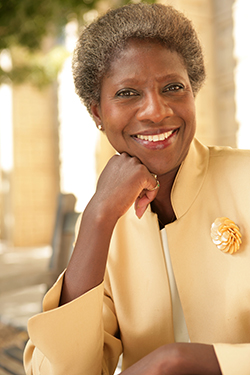 Hannah ValantineALL PHOTOS COURTESY OF THE NATIONAL INSTITUTES OF HEALTH
Hannah ValantineALL PHOTOS COURTESY OF THE NATIONAL INSTITUTES OF HEALTH
Before she arrived at the NIH, Valantine, a cardiologist by training, worked at Stanford University. Her research focused on the mechanisms that play out in acute and chronic transplant failure and in transplant coronary artery disease. She also served as a dean for diversity and leadership.
Valantine’s education occurred mostly in the U.K. She was born in Gambia, but when she was 13, her family moved to London, where her father was appointed as the Gambian ambassador. After completing high school, Valantine studied biochemistry at London University and attended St. George’s Hospital Medical School. She completed her postgraduate work in the field of cardiology and then moved to the U.S. to train as a fellow in the field of cardiac transplants.
Rajendrani Mukhopadhyay, the chief science correspondent for the American Society for Biochemistry and Molecular Biology, discussed issues of diversity and mentoring with Valantine. The interview has been edited for length and clarity.
What do you think diversity means?
Diversity means bringing together a broad spectrum of perspectives and experiences to solve complex problems. Race, gender, disability, sexual orientation, sex-gender identity — all bring to the table different perspectives. It means bringing together that broad range of perspectives that will help us to do better science.
Are there examples you can point to from your own career where you benefited from diversity?
I’ve always worked in an interdisciplinary space — to understand the complexities that occur in the management of patients after organ transplantation. That means bringing together a whole range of experts to get the optimal care to the patient. You have cardiac surgeons, cardiologists, sociologists, psychologists, psychiatrists, nurses, students, basic scientists, immunologists, infectious diseases specialists (and) endocrinology specialists. When you get those different experts together, you begin to give optimal care to the patient. In working with teams like this, I came to understand firsthand what diversity in a team means (and) how it could result in better care for patients and better research.
If you switch back to the area of diversity, one of the things that I firmly believe is that we have not, to date, applied the scientific rigor that is required to the very complex field of workforce diversity. If we start thinking about the science of diversity and putting together interdisciplinary teams, we have to figure out what strategies actually work, how they work, and how can we disseminate them more rapidly and scale them up.
In an article that I coauthored with (NIH Director Francis) Collins in (the Proceedings of the National Academy of Sciences), we put together four areas that pose as challenges. If (these challenges) are solved, we believe we will be able to enhance the diversity of the scientific workforce much more rapidly than we have previously done.
(One area) is creating seamless transitions across the different stages of a career path. We know that we lose people at every stage. Even when we have a robust pipeline, because of this attrition, we are at risk of taking a very long time to diversify the workforce. If we can have mechanisms that help people to transition from one stage to the other, then we’re likely to get the results that we want. One particular transition point is that transition from the training phase to the independent career phase. That is almost like a valley of death. We lose a lot of people, in particular women. That area needs a lot more resources and work. A lot of my work is going to be focusing particularly on that area.
What do you think is the influence of culture in science?
The culture of the individual scientist is very important. It gives you the perspective of who you are, what your values are and what you bring to the table. Then we have the culture of the institution. Academic institutions, for example, have a very defined culture.
Sometimes those cultural norms get in the way of diversity. The workplace in an academic institution is very focused, 24/7. That’s the ideal work culture. Well, that was all invented when there was a different family culture and structure where the man went out to work and the woman stayed at home. But now you have dual careers. It’s the norm. But those academic cultures have not adjusted. We perpetuate this ideal worker, which is at odds with the individual worker. It creates tensions and contributes to attrition.
When I was at Stanford, we came up with a program, which we called academic biomedical career customization, to address the culture. It gets people to think about what kinds of flexibility they need over the course of their careers. That was one part of it.
The other part of it recognizes what the cultures are and the support needed to create flexibility. We came up with a time-banking program. We discovered that the culture often pushes one to do work that is not recognized. We call it stealth work. You don’t get any additional recognition for serving on search committees, promotion committees, certain kinds of mentoring. Yet you are expected to do it. What if when you stepped up to do those service kinds of work that are supportive of your institution, you could earn credits and then cash in those credits for things that buy back some of your time? For example, if you served on a search committee, we’ll give you X number of credits. You could trade those in for support at home – housework, meals delivered to your home — or you could chose to cash those in for help in your work. You could cash it in for support to help you with manuscript writing, grant writing – many things like that would help buy back your time. We found that to be very effective.
I say all this because these things address culture. What we discovered was that people were not taking career flexibility policies. They were concerned they might be viewed as not serious about their careers. There needs (to be) a deep and systemic cultural change.
How do you intend to track success of your programs at the NIH?
We’re working in four areas. One is seamless transitions. One is social-psychological factors. One is the science of diversity. The fourth is creating a national strategy. We have metrics all along the way. For example, in the social-psychological area, have we changed the level of bias? Do we change the level of behaviors associated with the biases? Are we seeing a greater diversity in our applicant pools for positions?
We are viewing the (NIH Intramural Research Program) of the 3,000 or so scientists as a wonderful place to test new approaches.
How have other funding agencies responded to your work?
Very positive. There is a mandate from the White House for interagency collaboration around this work of diversity. There are a number of committees, but one of them is addressing the issue of diversity in the STEM workforce.
In that working group, 13 agencies are represented. I, together with a representative from (the National Science Foundation), co-chair that group. We are asking questions like “What are gaps across the agencies in terms of diversity?” and “What can be done to fill these gaps?” That resonates very much with me, because an additional question that I’m pushing the group to address is “How can we link across the paths?” Way down at the beginning, where you have the education department, what is math capability preparation looking like? And how can it be done better? How are those kids who are going through those programs being tracked so that, when they come into the domain of the NSF, how are we seeing those investments play out? Then further along, when the domain (becomes that of the) NIH, how do you link (up)?
One of the areas that is coming up and resonating across agencies is campus climates. How can we create campus climates of inclusion that give a sense of belonging? You are more likely to recruit and retain people into the STEM careers.
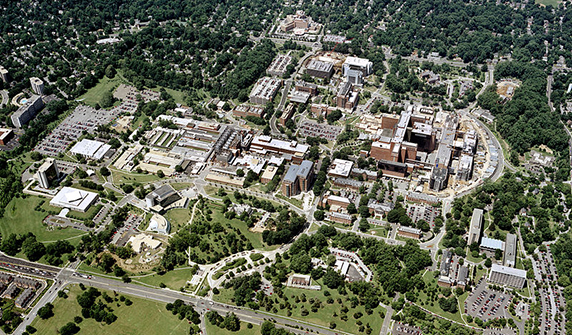 Valantine oversees scientific workforce diversity at the National Institutes of Health, the largest biomedical research agency in the world.
Valantine oversees scientific workforce diversity at the National Institutes of Health, the largest biomedical research agency in the world.
What would you say to people who are in the position of mentoring?
Mentoring means different things to different people. I would say (to the mentors that) the time has come for you to do it again with the same scientific rigor as we do everything else. We need to test, figure out what works and in what context, and come up with models of effective mentoring. We have to determine whether mentor training is needed, how it should be delivered, who should be trained and, most importantly, how it can be evaluated.
Some of this work is already going on through the National Research Mentoring Network, the NRMN. This is one of the large programs that the NIH launched last year. The NRMN comes from the idea that a lot of the students that we want to recruit and train do not have adequate mentoring. Perhaps we can have a national system that could link mentees (students and trainees) with mentors across the country and have mentoring take place almost electronically. The whole system is being set up, and we are recruiting vigorously to match mentor and mentee and also to train mentors.
Can you point to times over the course of your career when you felt the effects of a lack of diversity?
Growing up in Gambia until I was 13 and moving to England in the 1960s at the height of racism — it was quite shocking to me to have to make that shift in culture. Being the only black kid in the school, as opposed to being part of a majority, was very challenging. It is a time in your life, age 13, when you least want to be different. You want to be the same as everybody. It was very difficult for me to find my feet, to know where my place was, to the extent that by the end of high school, I wasn’t even sure that I wanted to go into university.
I took a year off. In that year, I found that I really did want to do science. I started to work in a microbiology lab and then went back to a biochemistry undergraduate (program). I had great support and didn’t look back thereafter.
You took a year off to work in a microbiology lab? Eighteen-year-olds normally don’t gravitate to that!
Yes! I worked for the Metal Box company in a microbiology lab. Metal Box sold cans to the customers who make food. The customers filled food into the can and then put the top on. But occasionally a leak occurred and bacteria grew. They would send (the cans) back to culture the bacteria and test the cans. It was very exciting for me to take this food, plate it on agar dishes and, a few days later, see growth of microorganisms. I was very excited to see in action what had been taught in the classroom. That was my first inkling of how science means something in the real world.
But in going through medical school and then residency in London, there was no diversity at all. Very few women were at the level of what you call attending here, but we call them consultants there. All white male. I had to have supporters and mentors who were very different from me. They had to be, by definition.
When I went into cardiology in London, there were two women who were consultant cardiologists. Imagine that. But it didn’t matter. What that taught me is that even though you benefit greatly from role models and seeing others like yourself — it gives you a sense of resilience and the belief that you too can make it – I do think we ought to be very clear with trainees that mentors do not have to necessarily be like you.
Quite honestly, we are still in a state where the higher echelon is occupied by certain groups. The key thing, I believe, as a trainee is to get yourself into that network. That often means finding mentors who, by definition, will not look like you. Does that mean they are not going to help you? No, often they do.
Some of my best mentors and supporters looked nothing like me. They were committed. They did more than mentoring. They did sponsorship. What that means is that when there was a job that I was interested in, they didn’t just write a letter; they picked up their phone to their buddies and said, “You have to take this person because she’s the best.”
The other thing (your sponsors) do is that, when you start doubting yourself, they don’t allow you to doubt yourself. You go to them and say, “I’m thinking about a family, and I don’t think …” They won’t necessarily say, “Here’s the lighter path.” If they are true sponsors, they’ll say, “Well, I understand the difficulties, but I know you can still do it. You’ve got it in you. Go for it.”
The best sponsors are people who are able to see what your potential is and don’t allow you to doubt yourself. That’s what we need more of.
Enjoy reading ASBMB Today?
Become a member to receive the print edition four times a year and the digital edition weekly.
Learn moreGet the latest from ASBMB Today
Enter your email address, and we’ll send you a weekly email with recent articles, interviews and more.
Latest in People
People highlights or most popular articles
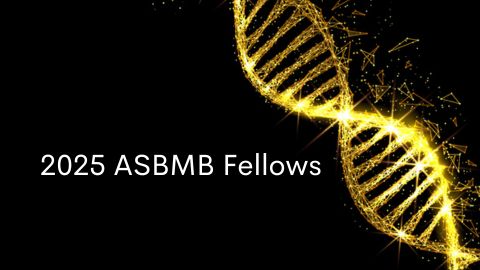
ASBMB names 2025 fellows
American Society for Biochemistry and Molecular Biology honors 24 members for their service to the society and accomplishments in research, education, mentorship, diversity and inclusion and advocacy.

When Batman meets Poison Ivy
Jessica Desamero had learned to love science communication by the time she was challenged to explain the role of DNA secondary structure in halting cancer cell growth to an 8th-grade level audience.
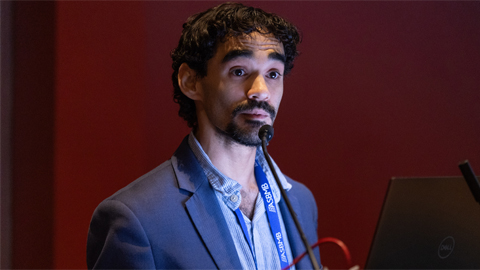
The monopoly defined: Who holds the power of science communication?
“At the official competition, out of 12 presenters, only two were from R2 institutions, and the other 10 were from R1 institutions. And just two had distinguishable non-American accents.”
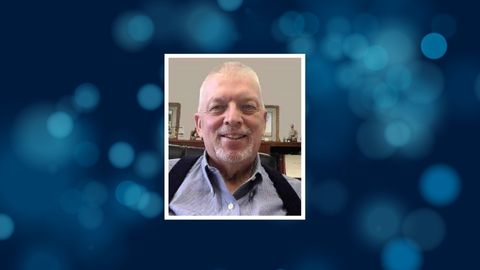
In memoriam: Donald A. Bryant
He was a professor emeritus at Penn State University who discovered how cyanobacteria adapt to far-red light and was a member of the American Society for Biochemistry and Molecular Biology for over 35 years.

Yes, I have an accent — just like you
When the author, a native Polish speaker, presented her science as a grad student, she had to wrap her tongue around the English term “fluorescence cross-correlation microscopy.”

Professorships for Booker; scholarship for Entzminger
Squire Booker has been appointed to two honorary professorships at Penn State University. Inayah Entzminger received a a BestColleges scholarship to support their sixth year in the biochemistry Ph.D. program at CUNY.

